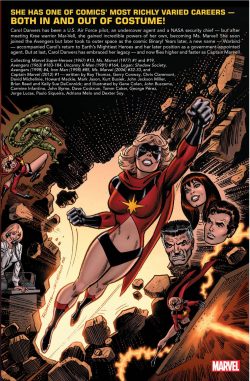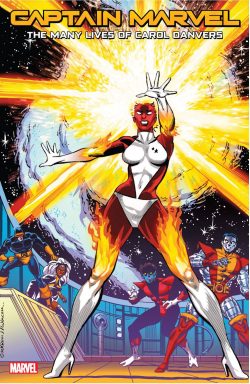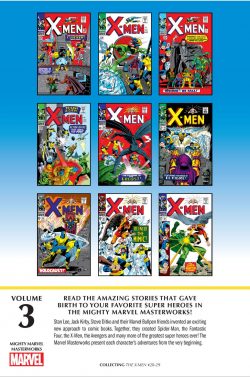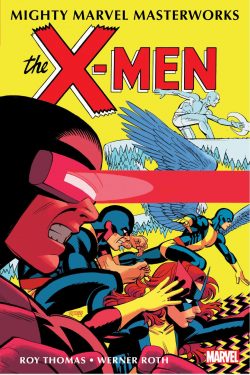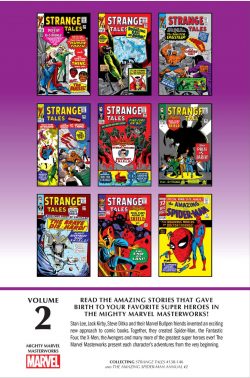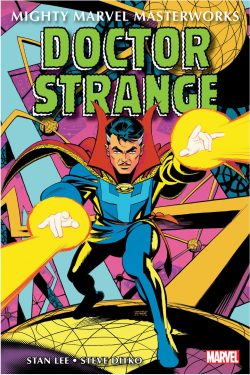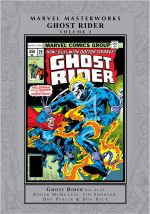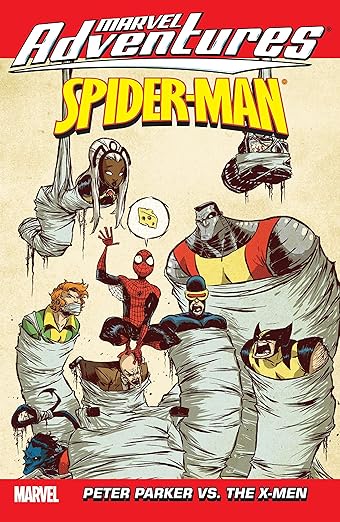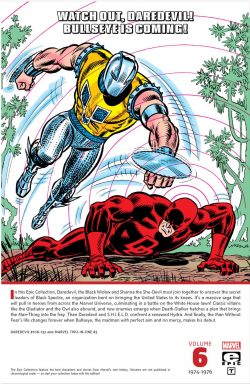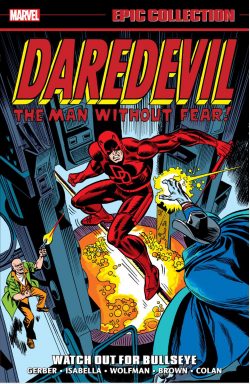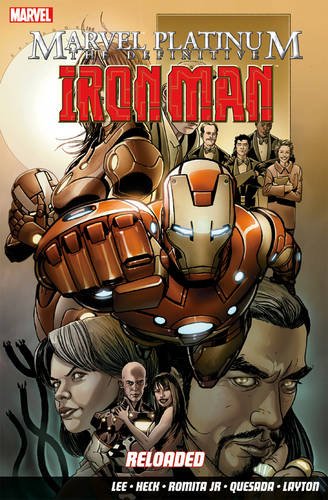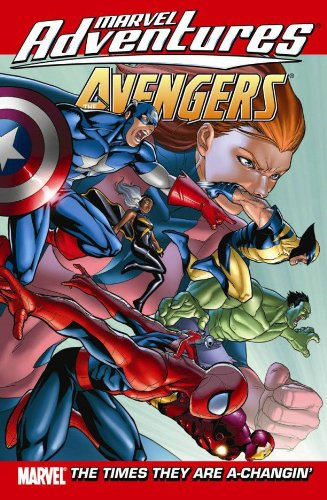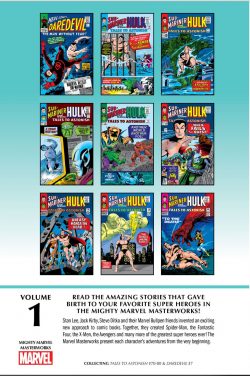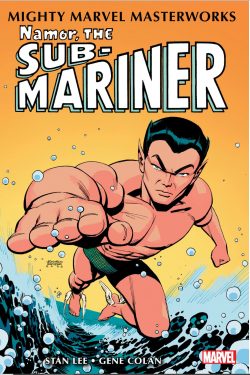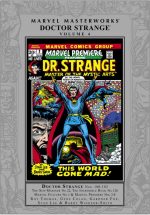

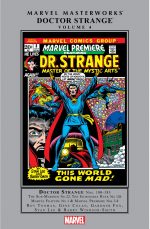
By Roy Thomas, Stan Lee, Gardner Fox, Barry Windsor-Smith, Archie Goodwin, Gene Colan, Marie Severin, Herb Trimpe, Don Heck, Sam Kweskin, Frank Brunner, P. Craig Russell, Jim Starlin & various (Marvel)
ISBN: 978-0-7851-3495-4 (HB/Digital Edition)
Win’s Christmas Gift Recommendation: Arcane Anniversary Astonishment… 9/10
When the budding House of Ideas introduced a warrior wizard to their burgeoning pantheon in the summer of 1963, it was a bold and curious move. Anthologically, bizarre adventures and menacing aliens were still incredibly popular, but most dramatic mentions of magic or the supernatural (especially vampires, werewolves and their equally eldritch ilk) were harshly proscribed by a censorship panel which dictated almost all aspects of story content – the self-inflicted Comics Code Authority.
That eldritch embargo probably explains writer/editor Stan Lee’s low key introduction of Steve Ditko’s mystic adventurer: an exotic, twilight troubleshooter inhabiting the shadowy outer fringes of society.
Within a year of Fantastic Four #1, long-lived monster-mystery anthology Strange Tales became home for the blazing boy-hero Human Torch (from #101, cover-dated October 1962), launching Johnny Storm on a creatively productive but commercially unsuccessful solo career.
In 1963, Tales of Suspense #41 saw new sensation Iron Man battle a crazed scientific wizard dubbed Doctor Strange, and with the name in copyrightable print (a long-established Lee technique: Thorr, The Thing, Magneto, The Hulk and more had been disposable Atlas “furry underpants monsters” long before they became in-continuity Marvel characters), preparations began for a truly different kind of hero.
The company had already devised a quasi-mystic troubleshooter for a short run in Amazing Adventures (volume 1 #1-4 & #6, spanning June-November 1961). The precursor was balding, trench-coated savant Doctor Droom – retooled in the 1970s as Doctor Druid when his exploits were reprinted. Psychiatrist, sage and paranormal investigator, he tackled everything from alien invaders to Atlanteans (albeit not the ones Sub-Mariner ruled). He was subsequently retro-written into Marvel continuity as an alternative candidate for Stephen Strange’s ultimate role as Sorcerer Supreme.
The man we know debuted in Strange Tales #110 (July 1963). After a shaky start, the Master of the Mystic Arts became an unmissable icon of cool counter-culture kids who saw in Ditko’s increasingly psychedelic art, echoes and overtones of their own trippy explorations of other worlds. That might not have been the authors’ intention but it certainly helped keep the mage at the forefront of Lee’s efforts to break comics out of the “kids-stuff” ghetto.
After Ditko abruptly left the company at the height of his fame and success in early 1967, the feature went through a string of creators before Marvel’s 1968 expansion allowed a measure of creative stability as the mystic master won his own monthly solo title in a neat moment of sleight of hand by assuming the numbering of Strange Tales. Thus, this enchanting full colour compilation gathers Doctor Strange #180-183 (May-November 1969) whereupon he became one of the earliest casualties of a superhero implosion heralding the end of the Silver Age. Also included are guest appearances in Sub-Mariner #22 and Incredible Hulk #126 (both 1970), prior to the sorcerer’s return in Marvel Feature #1 (December 1971) and a second bite of the cherry as star of Marvel Premiere #3-8 (July 1972 through May 1973).
Those complex, convoluted, confusing times are better explained in Roy Thomas’ Introduction before the drama resumes with #180’s ‘Eternity, Eternity!’
Previously, Dr. Stephen Strange had joined Black Night Dane Whitman and assorted Avengers in saving Earth from doom by Asgardian demons Surtur and Ymir and here – thanks to Thomas, Gene Colan & Tom Palmer – suffers nightmares and dire premonitions on New Year’s Eve before learning that the guiding spirit of creation has been enslaved by sadistic dream demon Nightmare…
After a Colan pin-up of the good doctor and his closest associates, ‘If a World Should Die Before I Wake…’ follows the mage into the dreamlands and beyond to rescue the lynchpin of reality where he is defeated and despatched to uncharted regions. In the miasma he makes an unlikely ally as concluding episode ‘And Juggernaut Makes Three!’ sees Eternity liberated, Nightmare defeated and Stephen Strange rewarded by the reality-warping over-god by being unmade and recreated in a new identity. In the minds of humanity, Dr. Stephen Sanders is nothing to do with recently outed, publicly vilified masked mystic Dr. Strange…
The radical reset was too little too late and Dr. Strange #183 (November 1969) was the final issue. In ‘They Walk by Night!’, Thomas, Colan & Palmer introduced a deadly threat in the Undying Ones, an elder race of devils hungry to reconquer the Earth.
The story went nowhere until Sub-Mariner #22 (February 1970 by Thomas, Marie Severin & Johnny Craig) as ‘The Monarch and the Mystic!’ brought the Prince of Atlantis into play, as told in a sterling tale of sacrifice wherein the Master of the Mystic Arts seemingly dies holding the gates of Hell shut with the Undying Ones pent behind them.
The extended saga then concluded on an upbeat note with The Incredible Hulk #126 (April 1970) ‘Where Stalks the Night-Crawler!’ by Thomas & Herb Trimpe, wherein a New England cult dispatches helpless Bruce Banner to the nether realms in an attempt to undo Strange’s sacrifice.
Luckily cultist Barbara Norris has last minute second thoughts and her sacrifice frees the mystic, seemingly ending the threat of the Undying Ones forever. At the end of the issue Strange retired, forsaking magic, although he changed his mind before too long as the fates – and changing reading tastes – called him back to duty.
Cover dated December 1971, Marvel Feature #1 bombastically introduced the trio of antiheroes united as The Defenders, and just how Strange resumed his mystic arts mantle was tucked into a heady 10-page thriller at the end, proving that not all good things come in large packages. Crafted by Thomas, Don Heck & Frank Giacoia, ‘The Return’ finds medical consultant Stephen Sanders back in Greenwich Village where his old Sanctum Sanctorum is home to an incredible impostor posing as his former self. It takes the intervention of his sagacious mentor The Ancient One to restore his forsaken skills before the conundrum is solved and a villain unmasked…
Back in arcane action, Dr. Strange took up residence in Marvel Premiere, beginning with #3 (July 1972) as Stan Lee, Barry Windsor-Smith & Dan Adkins employ cunning, misdirection and an ancient enemy to attack the mage in ‘While the World Spins Mad!’
That visual tour de force segued into an epic Lovecraftian homage/pastiche beginning in MP#4 when Archie Goodwin, Smith & Frank Brunner detail how Strange’s attempt to aid embattled Ethan Stoddard remove a ghastly malefic contagion from his New England hometown of Starkesboro goes awry. Shamelessly plundering Lovecraft’s literary lore for a graphic gothic masterpiece attempt leads to a severely weakened Master of the Mystic Arts ambushed by the victims he helped and offered as a sacrifice in ‘The Spawn of Sligguth!’
Written by Gardner F. Fox with art by Sam Kweskin (as Irv Wesley) & Don Perlin, and incorporating themes inspired by Robert E. Howard, the dark tale unfolds as Strange breaks free and learns that ‘The Lurker in the Labyrinth!’ is merely a herald for a greater primordial evil about to reawaken before facing another of its vanguard in #6’s ‘The Shambler from the Sea!’ (Fox, Brunner & Sal Buscema). With faithful allies Wong and Clea drawn into the weird war against now-exposed malignant mega-manipulator Shuma-Gorath, Strange’s latest triumph/close shave directs the secret heroes to Stonehenge…
Marvel Premiere #7 highlights ‘The Shadows of the Starstone!’ courtesy of Fox, P. Craig Russell, Mike Esposito Giacoia & Dave Hunt, as new players Henry Gordon and enigmatic medium Blondine join the human resistance just in time to combat latest horror Dagoth, but quickly enough to save Strange from a thaumaturgical boobytrap…
The serialised shocks pause with #8 (May 1973, by Fox, Jim Starlin, Giacoia & Hunt) as animated mansion Witch House assaults the assembled humans until Strange puts an end to the matter. Resolved to work alone he heads back to Stonehenge and employs ancient forces to defeat an army of devils and follow their trail to another world. However, even after destroying their lord he is marooned there by ‘The Doom that Bloomed on Kathulos!’…
To Be Continued…
Although the comics spellbinding ends here, there are still treats and surprises in store, beginning with the first cover to Doctor Strange #180 by Colan & Palmer. It had been lost in the post for years and required fast action to be replaced back in 1968. Also on offer are production art proofs and pre-editorial changes: a fascinating glimpse at the tricks behind the comics wonderment, and maybe the biggest Biographies section you’ve ever seen…
The Wizard of Greenwich Village has always been an acquired taste for superhero fans, but the pioneering graphic bravura of these tales and the ones to come in the next volume left an indelible mark on the Marvel Universe and readily fall into the sublime category of works done “ahead of their time”. Many of us prefer to believe Doctor Strange has always been the coolest of outsiders and most accessible fringe star of the Marvel firmament (and now we have mega-blockbuster movies to back us up, so Yar Boo Sucks to them naysayers!). This glorious grimoire is a miraculous means for fans to enter his world once more and the perfect introduction for recent acolytes or converts created by the movie iteration.
© 2016 Marvel Characters, Inc. All rights reserved.

